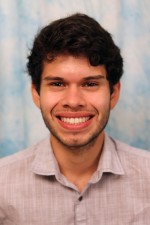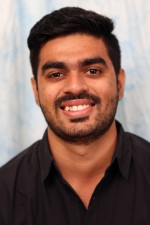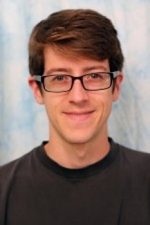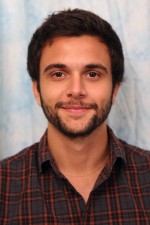
Sam Chandler
Sam has experience working with autonomous underwater vehicles at Boston Engineering and Hydroid Inc. His work with a biomimetic robotic fish at Boston Engineering sparked his initial interest in robotics and paved the way for his future work at Hydroid. There he worked in a small R&D group creating the next generation REMUS 100 vehicles previously designed by engineers at Woods Hole Oceanographic Institute. He was responsibilities included new power PCB designs, battery controller test fixture design, new sensor research, cabling interface design, and creating systems level electrical documents.
Sam has a degree in electrical engineering with a minor in entrepreneurship from Northeastern University. He decided to further his education and be a part of the Robotic Systems Development program at Carnegie Mellon University to learn systems engineering principles that apply to product design, and further his knowledge about the robotics industry. In this project he hopes to gain a better understanding about other disciplines in robotics like software and mechanical engineering as well as apply his more extensive knowledge of electrical engineering. After school he hopes to work at a startup (maybe his own!) or in a small R&D group that will have a significant impact on the company.
Andy Tracy
Andy grew up learning to use machinery on his parents’ farm and learning to program on a TI-83 calculator. He received his B.S. in mechanical engineering from Rensselaer Polytechnic Institute in 2011, then spent three years doing big data analytics and two years doing mechanical design for an injection molding manufacturer. Andy likes hanging out at hackerspaces and learning everything he can about robots.

Flavian Pegado
A maker at heart and a student for life, Flavian enjoys exploring opportunities to learn new things. At the same time, he contributes whatever he knows to people around him. This passion has motivated him to explore various facets of technology, especially robotics tech. His experience of dabbling with robotics and embedded systems projects for the better part of the last decade has convinced him of the massive potential of the robotics industry. The robotics industry is rapidly proliferating into unchartered territories with applications areas as diverse as operation theatre to living room and manufacturing industry to farmlands. He desires to contribute to this revolution heralding new frontiers in solving real world problems by leveraging advanced robotics and technology.
Flavian has an undergraduate degree in computer science from St. Francis Institute of Technology, Mumbai and worked as a research assistant at RadLab SFIT. The concepts of ‘Frugal Innovation’ and ‘Design Thinking’ are central to all the projects he undertook while working at RadLab. His long term aspiration is to be a technopreneur, enriching lives of the masses through smart, affordable and sustainable innovation in agriculture, education and assistive technology.
Juan Pablo Vega
Juan Pablo, alias JP, has always been fond of impactful uses of technology. he believes now is the perfect time to reshape fundamental industries such as Agriculture, Energy, Transportation, and Medicine, where he expects to revert the balance back from the How’s to the What’s. JP sees Robotics as a convergent discipline, an umbrella covering the most advanced aspects of the Knowledge Era. It is the perfect tool for modern problems – a tool for multidisciplinary teams.
JP studied Electrical Engineering at Buenos Aires Institute of Technology, Argentina, focusing on the fundamentals of Robotics. In 2014, JP supported engineering decisions at Archimej Technology [href=betabioled.com], a Chinese-French company. In 2015, he led a small team into the journey of Virtual Reality and Connected Objects with Nerve Wearables [href=nervewearables.com]. Before starting his masters degree at Carnegie Mellon University, JP was a major engineer at EIWA [href=eiwa.ag], an Argentine company with dealings in Brazil and soon the United States. During his stay, JP working on 3D reconstruction from visual images and dedicated a vast majority of his time to empower the team to work at their full potential.

